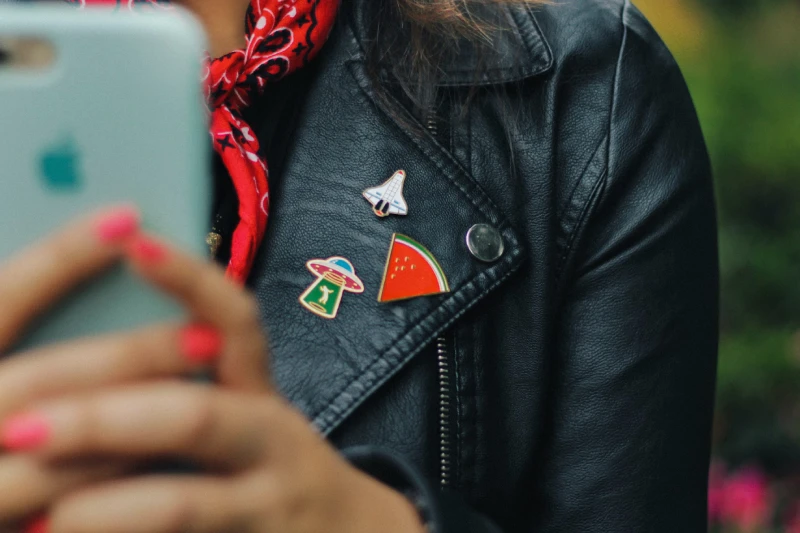
Most scientific discoveries are made within the public sector and as such, are freely available to anyone who wishes to use them.
However, in order for a discovery to be converted into a marketable product or service, it must first be patented. A patent is an exclusive right granted by a government to an inventor or assignee for a limited period of time in exchange for disclosure of the invention.
Securing rights to your work
One of the primary reasons why scientists should invest in getting patent protection is that it rewards them with monopoly rights. These exclusive rights give the patent holder the ability to commercially exploit their invention without fear of competition.
This enables inventors to generate revenue from their inventions by licensing them out or selling them outright. Moreover, patents also give inventors the option to produce and sell products or services based on their own invention, further increasing the potential return on investment.
Not only does patent protection provide financial rewards for inventors, but it also incentivizes future innovation by providing a strong incentive for companies to invest in research and development (R&D) around an invention.
Companies know that if they can develop new products or services based on a patented invention, they will be able to recoup their investment through licensing fees or sales of the patented product. This provides a powerful incentive for companies to invest heavily in R&D, which drives technological progress and economic growth.
Deter unnecessary competition
Another reason why scientists should consider investing in getting patent protection is that it provides a barrier to entry against competitors.
Once an invention is patented, competitors are prohibited from commercially exploiting the invention without first obtaining a license from the patent holder. This gives the patent holder a significant competitive advantage in the market and can enable them to command higher prices for their products or services.
In addition to providing a financial incentive for companies to invest in R&D, patents also act as a powerful marketing tool. The fact that an invention is patented often conveys to potential customers that it is a high-quality product or service worth investing in. This “seal of approval” can be extremely valuable for companies looking to launch new products or services into the market.
Incentivise innovation
Finally, it’s important to remember that patents also benefit society by incentivizing innovation. Without patents, there would be little incentive for companies to invest in R&D as they would not be able to recoup their investment through licensing fees or sales of the patented product. Moreover, inventors would have little incentive to disclose their inventions publicly as they could simply choose to keep them secret and reap all of the financial rewards themselves.
By incentivizing innovation, patents help to drive technological progress and economic growth. This benefit is not just felt by the inventors and companies that profit from patent protection, but by society as a whole. In other words, patents provide significant benefits to both the individual inventor and society at large.
Overall, there are many compelling reasons why scientists should invest in getting patent protection for their inventions.
Patents provide financial rewards for inventors, incentive companies to invest in R&D, act as a barrier to entry against competitors, and benefit society by incentivizing innovation. For all of these reasons and more, investing in patent protection is typically a wise decision for scientific inventions.
How to patent an idea
In the United States, inventors often ask how they can patent an idea. Alternatively, they could hire a patent attorney who can help them navigate through the process since The United States Patent and Trademark Office (USPTO) cannot grant a patent simply based on an idea. To obtain a patent, applicants must file a proper application with the USPTO and meet all statutory requirements.
There are three types of patents: utility, design, and plant patents.
Utility patents
May be granted to anyone who invents or discovers any new and useful process, machine, article of manufacture, or composition of matter, or any new and useful improvement thereof.
Design patents
May be granted to anyone who creates a new, original, and ornamental design for an article of manufacture.
Plant patents
Plant patents may be granted to anyone who invents or discovers and asexually reproduces any distinct and new variety of plant.
There are also two types of trademark registration: general intrastate commerce for businesses that conduct business solely within one state; federal commerce for businesses that conduct business in more than one state or in interstate commerce (trade between states).
How to patent an idea
To patent an idea, Inventors must file a non-provisional utility application with the USPTO. A non-provisional utility application is also sometimes called a regular utility application. For utility and plant patent applications filed on or after December 18, 2013, small entities (including micro-entities) pay a filing fee of $730.
A non-provisional utility application claims one or more inventions and establishes the right to exclude others from making, using, offering for sale, or selling the invention(s) in the United States or importing the invention(s) into the United States. Filing a non-provisional utility application is required before an inventor can obtain a patent from the USPTO.
The applicant must file a complete non-provisional utility application with sufficient information and support to allow examination of the invention by a technology center in order for an examiner to determine whether to issue a patent.
To help ensure that ideas are adequately disclosed so that others skilled in the art could practice them if they desired, applicants should file their utility applications with as much detail as possible regarding embodiments of their claimed invention.
To be entitled to a design patent, an inventor must have created a new, original and ornamental design for an article of manufacture. The design may comprise all features of appearance that can be seen by observation when considering the article as whole without disassembly or modification.
Design patents are examined to determine whether the design is novel and non-obvious over other similar designs. To be entitled to a plant patent, an inventor must have invented or discovered and asexually reproduced any distinct and new variety of plant.
The term “new” refers to novelty of the invention while “distinct” means that the variety is different from all previously known varieties. Utility and plant patents are granted for a term of 20 years from the date on which the application for the patent was filed in the United States or, in special cases, from an earlier effective filing date.
Design patents are granted for a term of 14 years from the date on which the grant issues.
To help ensure that ideas are adequately disclosed so that others skilled in the art could practice them if they desired, applicants should file their utility applications with as much detail as possible regarding embodiments of their claimed invention.
Securing design patent
To be entitled to a design patent, an inventor must have created a new, original and ornamental design for an article of manufacture. The design may comprise all features of appearance that can be seen by observation when considering the article as whole without disassembly or modification.
Design patents are examined to determine whether the design is novel and non-obvious over other similar designs. To be entitled to a plant patent, an inventor must have invented or discovered and asexually reproduced any distinct and new variety of plant. The term “new” refers to novelty of the invention while “distinct” means that the variety is different from all previously known varieties.
Securing utility and plant patents
Utility and plant patents are granted for a term of 20 years from the date on which the application for the patent was filed in the United States or, in special cases, from an earlier effective filing date. Design patents are granted for a term of 14 years from the date on which the grant issues.
To help ensure that ideas are adequately disclosed so that others skilled in the art could practice them if they desired, applicants should file their utility applications with as much detail as possible regarding embodiments of their claimed invention. To be entitled to a design patent, an inventor must have created a new, original and ornamental design for an article of manufacture.
The design may comprise all features of appearance that can be seen by observation when considering the article as whole without disassembly or modification. Design patents are examined to determine whether the design is novel and non-obvious over other similar designs.
Plant talent
To be entitled to a plant patent, an inventor must have invented or discovered and asexually reproduced any distinct and new variety of plant. The term “new” refers to novelty of the invention while “distinct” means that the variety is different from all previously known varieties. Utility and plant patents are granted for a term of 20 years from the date on which the application for the patent was filed in
The United States Patent and Trademark Office (USPTO) cannot grant a patent simply based on an idea. In order to obtain a patent, applicants must file a proper application with the USPTO which meets all statutory requirements.
Conclusion
There are many reasons why scientists and inventors should invest in getting patent protection for their inventions. First and foremost, patents reward inventors with monopoly rights that can be used to generate revenue from their inventions.
Secondly, patents provide incentives for companies to invest in further research and development around an invention, as they know that they will be able to recoup their investment through licensing fees or sales of the patented product.
Finally, patents act as a barrier to entry against competitors, giving the patent holder a significant competitive advantage.
Overall, patents provide numerous benefits to both inventors and society at large. They incentivize innovation and investment while also providing valuable legal protections that enable inventors to monetize their discoveries.
For these reasons and more, scientists should strongly consider investing in securing patent protection for their inventions.







